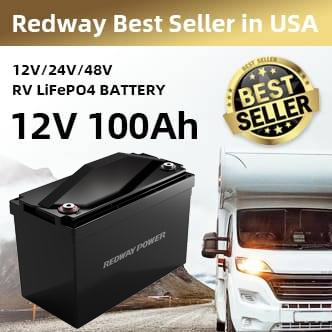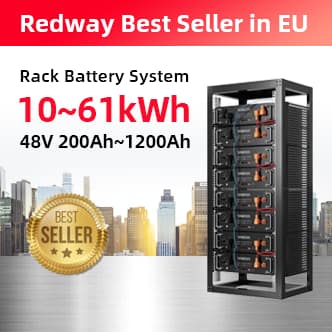Reach trucks and forklifts are both essential warehouse and material handling equipment, but they differ mainly in design, maneuverability, and application. A reach truck features extendable forks for narrow aisles and high stacking, while forklifts offer versatile lifting with greater load capacity but require more space.
How Do Reach Trucks Differ From Forklifts in Design?
Reach trucks are specialized forklifts with extendable forks and a compact build designed for navigating narrow aisles and reaching high shelves. Forklifts have a fixed mast and larger frame, suitable for outdoor and general-purpose lifting.
Reach trucks employ a “reach” mechanism — the forks extend forward to pick up loads—enabling access to tight spaces. They typically use three wheels for sharper turns and superior maneuverability indoors. Conversely, forklifts are heavier and use four wheels, allowing them to carry heavier loads over varied terrain but requiring wider aisles and open spaces.
Wholesale lithium golf cart batteries with 10-year life? Check here.
This design difference means reach trucks maximize storage space in warehouses with dense racking systems, while forklifts provide broader lifting functionality across multiple environments.
What Are the Primary Applications of Reach Trucks vs. Forklifts?
Reach trucks excel in indoor warehouse settings with narrow aisles and high racking, ideal for quick picking and stacking. Forklifts are more versatile, performing in factories, shipping docks, and outdoor yards, handling heavier loads and rough surfaces.
Want OEM lithium forklift batteries at wholesale prices? Check here.
Reach trucks typically operate on smooth, flat floors with controlled conditions, boosting efficiency in order fulfillment and logistics centers. Forklifts, with their strength and stability, can lift uneven or bulky loads, transport heavy pallets, or load trucks outdoors.
Selecting the right vehicle depends on the specific material handling needs, space constraints, load types, and operational environment.
Which Energy Solutions Best Power Reach Trucks and Forklifts?
Lithium battery technology, especially LiFePO4 types, is becoming the gold standard for powering both reach trucks and forklifts due to higher energy density, longer life, and lower maintenance compared to lead-acid batteries.
Leading OEM suppliers like Redway Battery provide tailored lithium battery packs designed for the demanding charge-discharge cycles of warehouse vehicles. Lithium batteries enable faster charging, longer shift operation, and lighter equipment weight, enhancing overall productivity.
Redway’s expertise in manufacturing customized lithium batteries ensures compatibility, safety, and optimal performance for clients requiring advanced energy solutions in material handling.
| Feature | Lead-Acid Batteries | Lithium LiFePO4 Batteries (Redway) |
|---|---|---|
| Weight | Heavier | Lighter |
| Charge Time | Longer (6-8 hours) | Shorter (2-3 hours) |
| Cycle Life | Around 1000 cycles | 2000+ cycles |
| Maintenance | Frequent water topping | Minimal |
| Environmental Impact | Toxic materials | Eco-friendlier |
Why Is Maneuverability a Key Difference Between Reach Trucks and Forklifts?
Maneuverability significantly influences warehouse efficiency. Reach trucks have tighter turning radii due to their 3-wheel design and smaller size, allowing operation in aisles as narrow as 6 to 7 feet.
Forklifts, although more robust, require wider aisles (10 to 12 feet minimum) for safe operation due to their larger turning radius and size. This affects warehouse layout planning and storage density.
Maneuverability impacts safety, speed, and operators’ ability to handle pallets quickly without damage. Reach trucks’ design optimizes precise load placement at various heights, essential for high-density racking.
How Does Load Capacity Compare Between Reach Trucks and Forklifts?
Forklifts generally offer higher load capacities, ranging from 3,000 to over 15,000 pounds, making them suitable for heavier items or multiple pallet handling. Reach trucks are optimized for lighter loads, typically 2,000 to 5,500 pounds, focusing on height and reach rather than raw lifting strength.
This loading difference reflects intended applications: forklifts handle bulkier industrial tasks, while reach trucks prioritize storage optimization and fast warehousing picking.
Warehouse managers must match load capacity requirements to vehicle choice to enhance safety and productivity.
When Should a Warehouse Choose a Reach Truck Over a Forklift?
Warehouses with high-density racking, narrow aisles, and a need for vertical storage efficiency should choose reach trucks. They maximize cubic storage space by enabling stacking up to 30+ feet high in aisles as narrow as 7 feet.
In contrast, warehouses handling bulky or heavy items with less restrictive aisle widths benefit from forklifts, which offer robust lifting and outdoor capability.
Operators must evaluate aisle width, load size, stacking height, and operational environment before selecting reach trucks or forklifts to optimize workflow and space utilization.
Can Lithium Battery Technology Revolutionize Reach Truck and Forklift Performance?
Yes, lithium batteries like the LiFePO4 packs supplied by Redway Battery offer significant advances over traditional lead-acid power sources. They provide longer runtime, faster charging, and reduced total cost of ownership.
Lithium-powered forklifts and reach trucks experience less downtime, lower weight, and improved energy efficiency. These factors lead to increased operational continuity and lower environmental impact.
Redway Battery’s OEM customization capabilities allow businesses to tailor battery solutions specific to their fleet’s power requirements, further enhancing vehicle life and performance.
Where Does Battery Maintenance Fit Into Reach Truck and Forklift Operations?
Battery maintenance is critical for uninterrupted warehouse operations. Lead-acid batteries require regular watering, equalizing charges, and careful charging control to avoid damage.
Lithium batteries from Redway Battery reduce maintenance drastically, needing no watering and tolerating fast, frequent charging. This lowers labor costs and improves safety by eliminating acid exposure risks.
Implementing lithium battery systems changes operational protocols, allowing for opportunity charging and reducing the need for battery swapping, which improves workforce efficiency.
What Are the Environmental Benefits of Using Lithium Batteries in These Vehicles?
Lithium batteries, especially LiFePO4 types, pose fewer environmental risks than lead-acid batteries since they are non-toxic, have longer lifespans, and are more recyclable.
Their higher efficiency reduces energy consumption and carbon footprint. Warehouses embracing lithium technologies contribute to sustainable logistics and corporate environmental responsibility.
Redway Battery champions green energy solutions by producing high-quality, durable lithium batteries that comply with global environmental standards, supporting cleaner industrial operations.
Redway Expert Views
“Modern warehouse operations depend heavily on efficient, safe, and environmentally sound material handling solutions. Lithium battery-powered reach trucks and forklifts represent a transformative shift in logistics, enabling businesses to maximize space, reduce downtime, and cut emissions. Our team at Redway Battery is proud to deliver innovative, high-performance LiFePO4 batteries tailored for these vehicles, ensuring operators can meet increasing demands with confidence and sustainability at the core.” — Redway Battery Engineering Team
Conclusion
Understanding the difference between reach trucks and forklifts involves examining design, applications, maneuverability, load capacity, and powering technology. Reach trucks specialize in maneuvering narrow aisles and high stacking, while forklifts provide versatile strength for heavier and bulkier loads.
Lithium battery integration, as championed by Redway Battery, enhances both vehicle types by boosting energy efficiency, reducing maintenance, and supporting sustainable warehouse practices. Careful evaluation of operational requirements and battery solutions can dramatically improve warehouse productivity and safety.
FAQs
Q1: Can reach trucks be used outdoors like forklifts?
Reach trucks are primarily designed for indoor use with smooth floors; they are not suited for rough or uneven outdoor terrain like forklifts.
Q2: How often do lithium batteries need replacement in forklifts?
LiFePO4 lithium batteries typically last 3-5 times longer than lead-acid batteries, often exceeding 2000 full charge cycles.
Q3: Are lithium batteries more expensive than lead-acid ones?
Initial costs are higher for lithium batteries, but their longer lifespan and lower maintenance typically reduce total cost of ownership.
Q4: Can Redway Battery customize batteries for specific forklift models?
Yes, Redway Battery offers full OEM/ODM customization to meet various specifications and performance requirements.
Q5: What safety advantages do lithium batteries offer for warehouses?
Lithium batteries feature safer chemistries, require no water maintenance, have built-in protection systems, and reduce risks of acid spills and hydrogen gas buildup.





